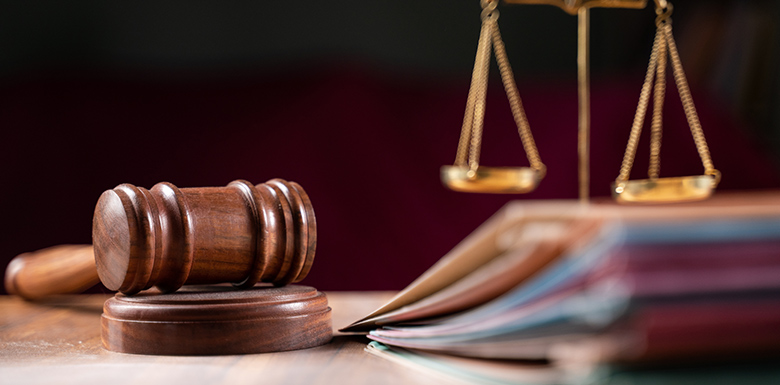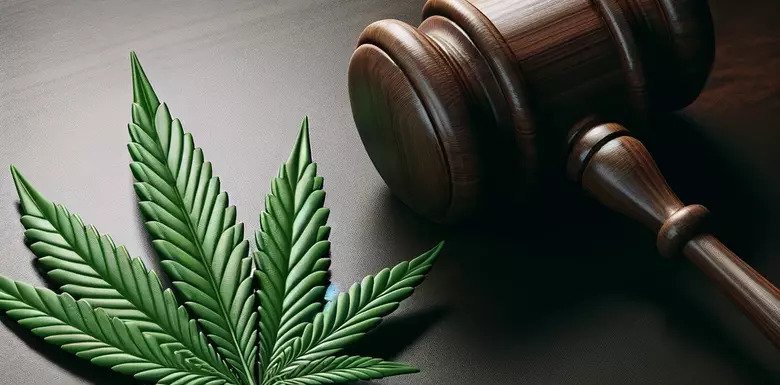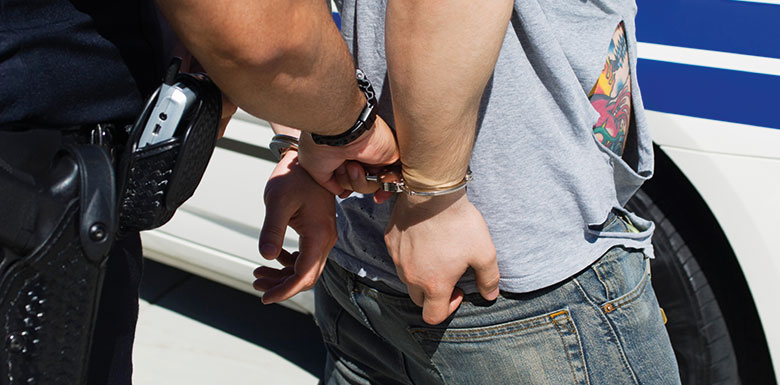After I eviscerated the Supreme Court in my last blog post, I thought I would point out that they do get it right every once in a while. Here are a few of the best decisions to have been handed down by the Supreme Court in the past ten years.
Imagine being 15 and making a big mistake. Your brain is not fully formed yet. You cannot smoke, drink, or even vote yet. Imagine getting a life sentence for that mistake. No one is saying you should not be punished for your crime or get special consideration because of your age, but it is hard for me to imagine being 15 and knowing that I will never again have the opportunity to see the outside world or reform my ways. That is where Graham v. Florida plays out.
Graham v. Florida, 560 U.S. ___ (2010)
A life sentence without the possibility of ever being released on parole is a severe sentence that most people assume is reserved for criminal cases involving a homicide. Surprisingly, Florida was one of the states that imposed a life sentence without parole in non-homicide cases. In 2010, the United States Supreme Court was asked to rule on the constitutionality of imposing a life sentence without parole on a juvenile offender.
Sixteen year old Terrence Graham was charged with armed burglary and attempted armed robbery when he and another individual tried to rob a store. Graham was sentenced to three years of probation as part of a plea agreement in which the trial court agreed to withhold an adjudication of guilt as long as Graham did not commit additional crimes.
A year later, Graham was back in court in connection with his involvement in a home invasion. The judge in the original armed burglary case revoked Graham’s probation and sentenced him to life in prison. The Florida legislature had abolished the parole system in the state, so Graham’s sentence effectively became life in prison without parole.
Relying in part on the Eighth Amendment’s prohibition against cruel and unusual treatment, the Supreme Court held that a juvenile offender cannot receive a life sentence without the possibility of parole for committing a crime that is not a homicide. The Court relied upon statistics from states in which juvenile offenders are eligible to receive a life sentence without parole that demonstrate that the sentence is a rarity even in states in which it is authorized.
The Court also made reference to the fact that the United States is the only country in the world that imposes such harsh sentences on non-homicide juvenile offenders. This decision is in keeping with an earlier ruling in which the Court struck down the death penalty for juvenile offenders in part because it concluded that juvenile offenders lacked the same culpability as adult offenders.
A 230 year debate is finally put to rest by the Supreme Court. What does the second amendment provision of “keep and bear arms” really mean? Why did the framers put in the “militia” wording? Isn’t that what they meant; only a “regulated militia” had this right? The Supreme Court answered in the negative. An individual has the right to own a firearm. Great decision!
District of Columbia et al. v. Heller, 554 U.S. 570 (2008)
The long-standing debate over the extent to which the Second Amendment to the Constitution gives a person the right to bear arms was at the center of a lawsuit filed by a law enforcement officer. The officer challenged a law in the District of Columbia prohibiting the carrying of an unregistered handgun and prohibiting the registration of handguns except as authorized under extremely limited circumstances by the chief of police.
The Supreme Court ended the debate by holding that the Second Amendment protects a person’s right to possess guns independent of the militia. It also upheld a person’s right to use a gun for lawful purposes including for self-defense. The mention of the militia in the Second Amendment was not meant, according to the Court, as a limitation on the scope of the right of an individual to keep and bear arms.
As with most rights granted by the Constitution, the right to bear arms does not prevent the government from imposing reasonable limitations upon the types of weapons a person may possess or on the right itself. For example, the government has the right to restrict felons and the mentally ill from possessing firearms. It may also restrict them from being carried in certain locations such as schools.
One issue left unresolved by this decision would be taken up by the court in McDonald v. Chicago a year later. Because the Heller case was limited to the District of Columbia, questions remained about the decision’s application to the states. The Supreme Court decided that the fourteenth amendment applied and the right to own a weapon was applicable to all citizens of all states! Great decision!
McDonald v. Chicago, 561 U.S. ___ (2010)
The city of Chicago law banning possession of handguns remained in force after the Supreme Court decision in District of Columbia v. Heller because the decision was based upon the Second Amendment and dealt with a law enacted by authority of the federal government. The city reasoned that without the Court expressly making the Second Amendment applicable to the states, its ban on handguns could remain.
The Court disagreed with Chicago’s reasoning and cited the Fourteenth Amendment and the Due Process Clause as authority for incorporating the Second Amendment and the rights afforded citizens by the Heller ruling to citizens of the states. The right to bear arms under the Second Amendment and as limited by the Heller decision applies to the states.
If you read my previous blog, you will understand that I am a huge believer in the fourth amendment. I believe in a broad interpretation of the fourth amendment. Well, I am a huge believer in all the amendments, except when the Supreme Court reads “commerce” or “taxation” incorrectly…but that is a story for another blog. The Supreme Court got it right twice in the last ten years on the fourth amendment – and this is one of those cases.
United States v. Jones, 565 U.S. ___ (2012)
If police wanted to track the movements of a suspected drug dealer, the traditional method would be assigning teams of detectives to follow the suspect around the clock. A joint task force composed of members of the Metropolitan Police Department and the FBI opted to make use of the latest technology by using a GPS tracking device attached to the suspect’s vehicle to track his movements.
The success of the operation was challenged from the beginning when the search warrant obtained by the task force expired before they could install the GPS device on the vehicle. They chose to ignore the expiration of the warrant and use the data gathered over a 28-day period to charge and convict the suspect of drug possession and distribution.
The defendant appealed his conviction citing the expired warrant. The government responded by claiming that a warrant was not necessary because they did not violate his expectation of privacy by placing a device on the vehicle and doing what they could have done with teams of detectives following him.
Justice Scalia wrote the majority decision in which the Court held that installation of the GPS device was an occupation of private property for purposes of gathering information about the suspect. According to the majority, such activities on the part of the government were a violation of the Fourth Amendment.
What is noteworthy about the case is the concurring opinion written by Justice Alito in which he argued that the Court should have ignored the private property rationale and come to the same conclusion on pure expectation of privacy grounds. Justice Alito wrote that people have an expectation of privacy even as to their public movements. This could open the doors for a future ruling from the Court in a case involving security cameras in public places.
Note: The other case involved using infrared sensors to target random houses to see if people were growing marijuana inside the house. The infrared sensors not only showed the pot, but showed people inside their homes. The Supreme Court said that was too big a privacy intrusion.
Imagine walking into a garage sale to buy a TV. Imagine walking into a dealership to trade in your car. Imagine giving a present to a child. Now imagine that every time you performed one of these actions, you had to call LG, or Ford, or Playskool to get permission to re-sell or gift an item to someone else. Ludicrous, right? But, if you are John Wiley and Sons, that is exactly what you were asking the Supreme Court to do by restricting the right of first resale. First resale allows you to “own” the item’s copyright/trademark once you have paid for it. In other words, the company (within restrictions) can no longer control what is done with the item, where it is sold, etc. This is a massive, blossoming issue. Did you know that the same medication that is sold to you for hundreds of dollars is sold to the similar situated person in some random country for less than $5. This is not because of government regulation or Canadian subsidies, it is for profit. Person in random country could never buy that drug for hundreds, so Americans are basically subsidizing the world market. America subsidizes the market for thousands and thousands of items. An enterprising young man figured out that college textbooks are really, really expensive and that he could get the same textbook in random country for 1/10 of the American market. He bought these books overseas, imported them, sold them on Amazon etc. for 5/10 the cost on the US market. Sounds like capitalism to me!
Kirtsaeng v. John Wiley & Sons, Inc., 133 S.Ct. 1351 (2013)
The first sale doctrine of copyright law was the issue before the Supreme Court in a case involving a Thai national who subsidized his tuition expenses by selling used textbooks in the U.S. that he purchased in Thailand. Business was good and the enterprising book reseller netted a profit of $100,000. The publisher of some of the books resold by the student filed a lawsuit claiming copyright infringement.
A technical point raised by the publisher was that the books in question were printed in Thailand under a license granted by the publisher and not in the U.S. The argument was that copyright laws give the purchaser of a book the right to resell it, but this only applied if the books were printed by the publisher.
The Supreme Court rejected the publisher’s argument by noting that to accept it would require libraries to obtain licenses from a publisher before they could lend a book. The Court said that once a book that is printed by the publisher or by an overseas company under a license from the publisher, the first sale doctrine applies and the publisher loses the right to object to resale of the book.
legal Blog

February 16, 2024
Ohio Criminal Defense Explained: What is the Burden of Proof?
Category: Criminal Defense

November 08, 2023
Ohio Issue 2 & Navigating Recreational Marijuana Laws in Ravenna
Category: Child Custody

July 31, 2023
The Connection Between Traffic Stops & Portage County Drug Arrests
Category: Criminal Defense